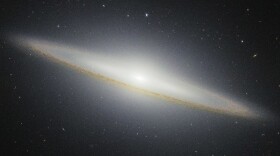Twelve years ago, NASA's Curiosity rover journeyed to Mars with instruments that measured space radiation for the first time en route. The findings were sobering: astronauts would face radiation doses equivalent to a full-body CT scan every few days—raising cancer risks by 3–4% on the trip alone. Most of this came from galactic cosmic rays, which spacecraft walls can’t block. And this didn’t even include the added threat of solar storms. To send humans safely to Mars, solving the radiation challenge is essential.

Play Live Radio
Next Up:
0:00
0:00
Available On Air Stations






